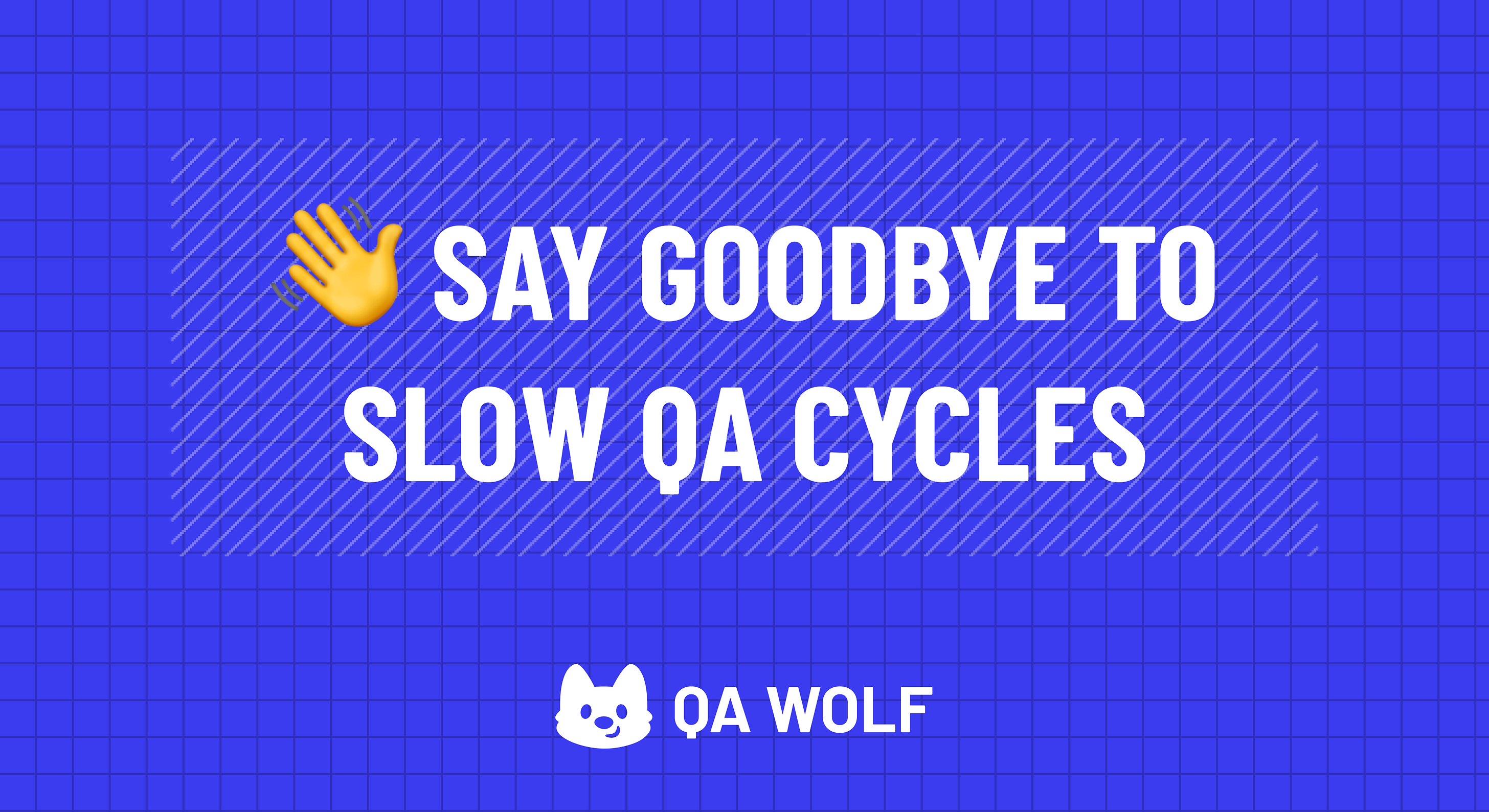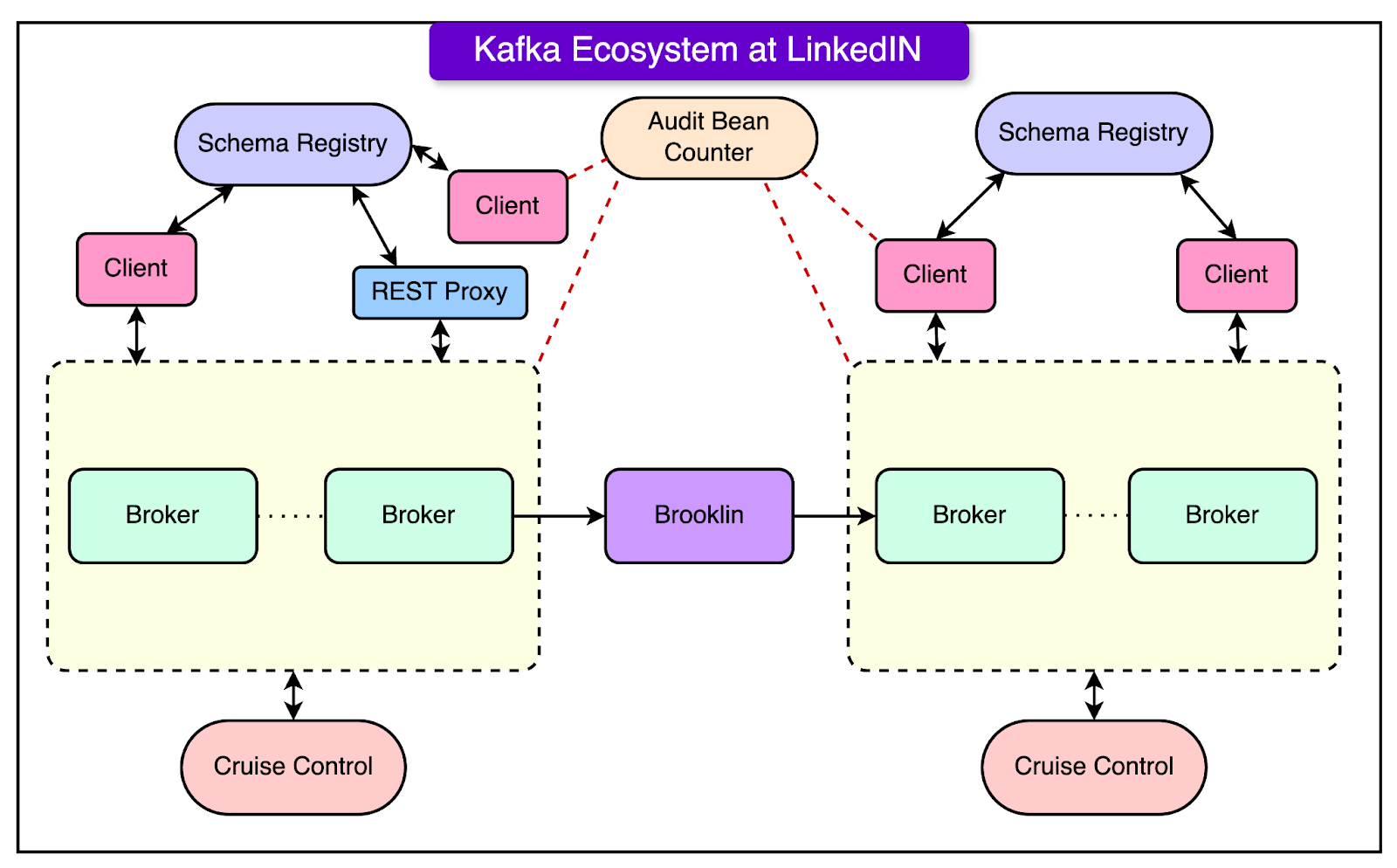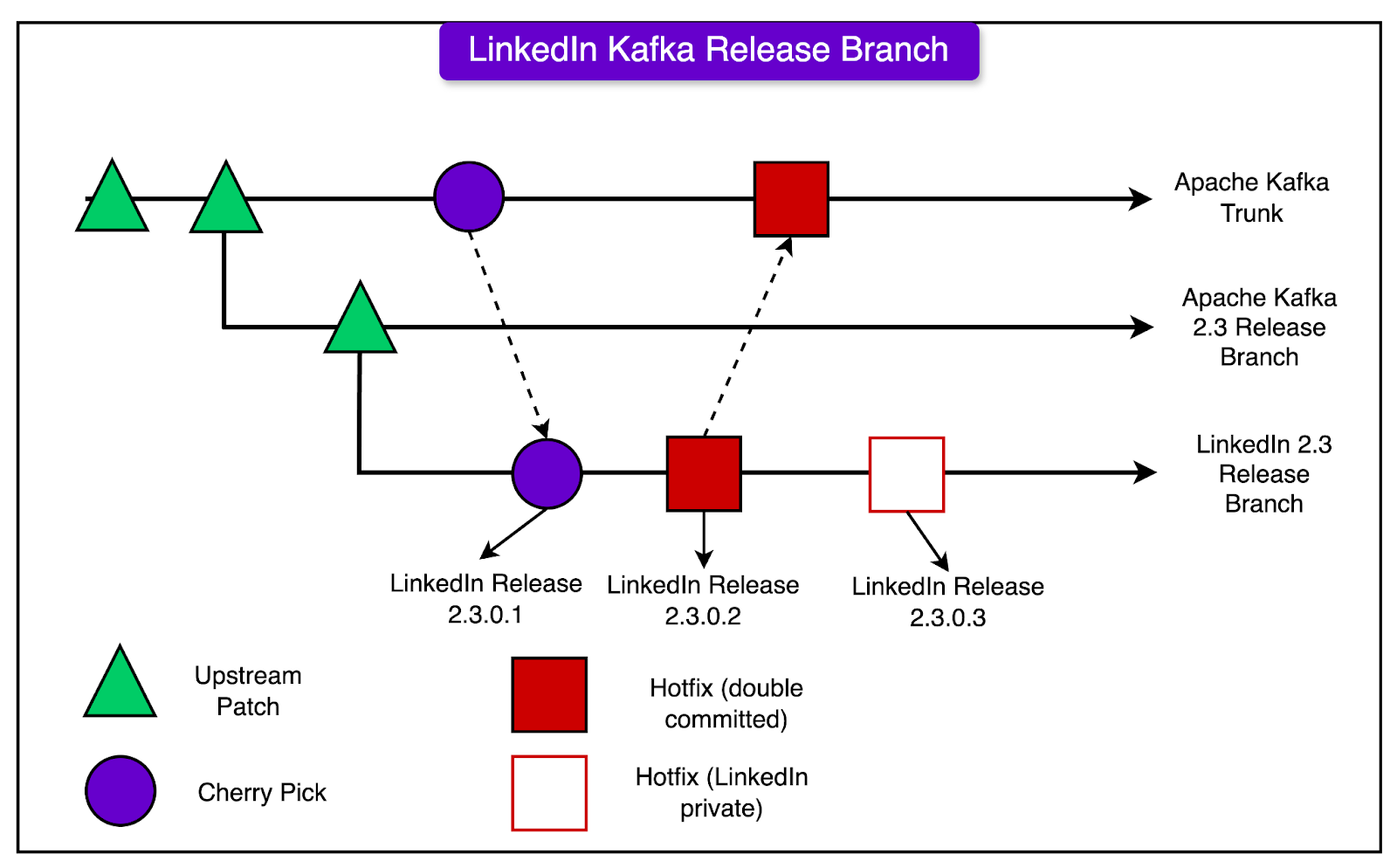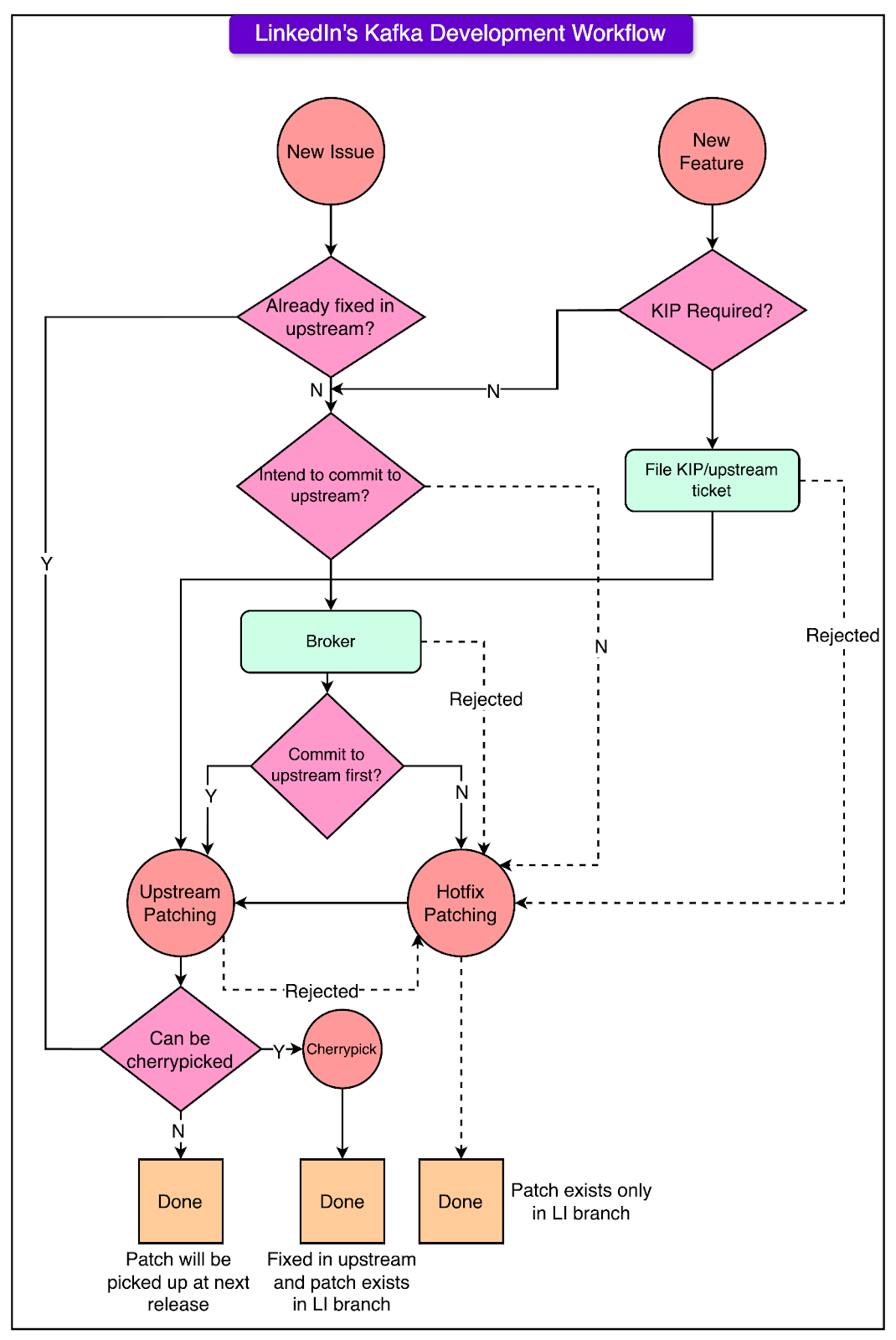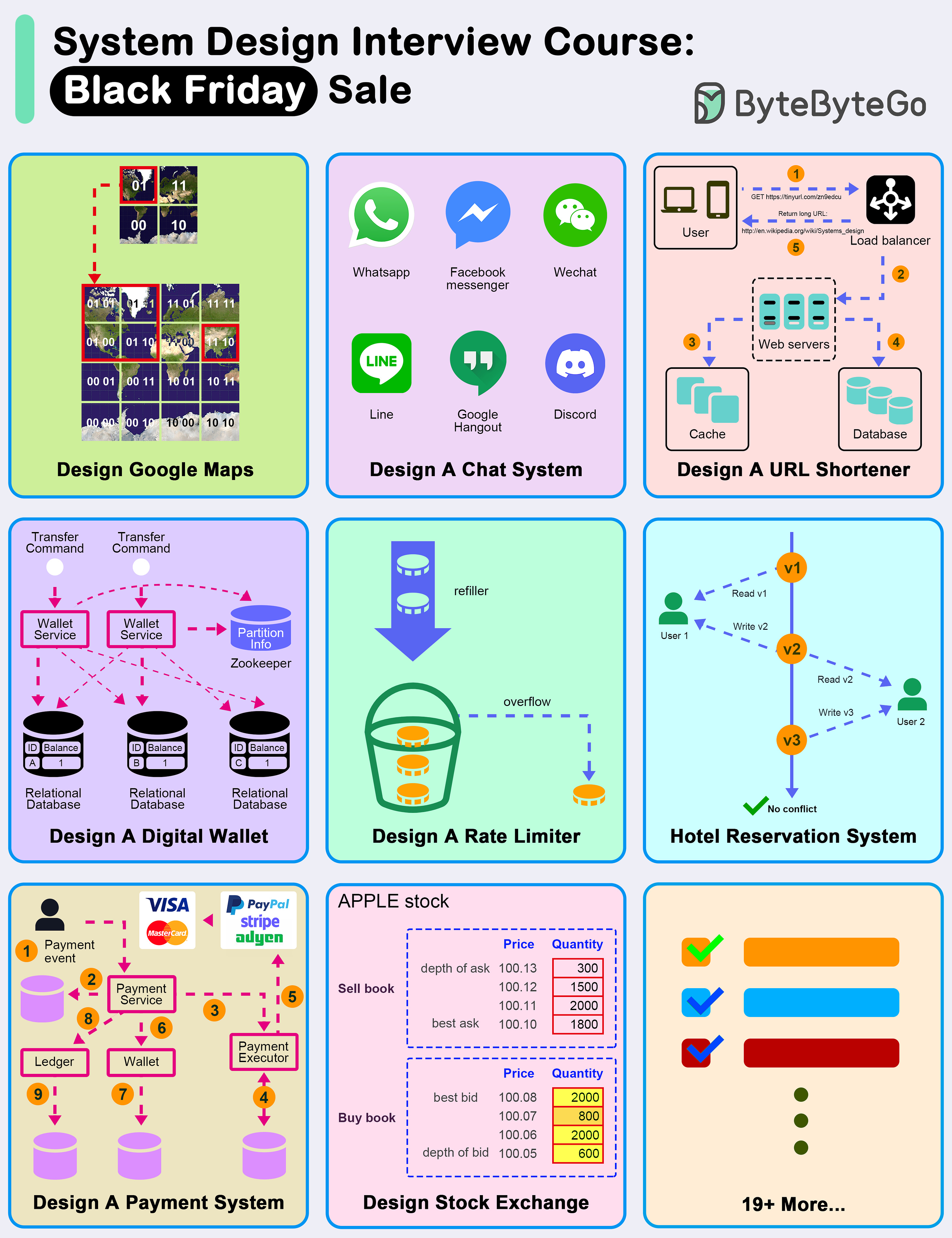Archives
- By thread 4439
-
By date
- June 2021 10
- July 2021 6
- August 2021 20
- September 2021 21
- October 2021 48
- November 2021 40
- December 2021 23
- January 2022 46
- February 2022 80
- March 2022 109
- April 2022 100
- May 2022 97
- June 2022 105
- July 2022 82
- August 2022 95
- September 2022 103
- October 2022 117
- November 2022 115
- December 2022 102
- January 2023 88
- February 2023 90
- March 2023 116
- April 2023 97
- May 2023 159
- June 2023 145
- July 2023 120
- August 2023 90
- September 2023 102
- October 2023 106
- November 2023 100
- December 2023 74
- January 2024 75
- February 2024 75
- March 2024 78
- April 2024 74
- May 2024 108
- June 2024 98
- July 2024 116
- August 2024 134
- September 2024 130
- October 2024 141
- November 2024 171
- December 2024 115
- January 2025 216
- February 2025 140
- March 2025 220
- April 2025 13
-
My NEW book, Coding Interview Patterns, is now available on Amazon
My NEW book, Coding Interview Patterns, is now available on Amazon
My new book, Coding Interview Patterns, is now available on Amazon!͏ ͏ ͏ ͏ ͏ ͏ ͏ ͏ ͏ ͏ ͏ ͏ ͏ ͏ ͏ ͏ ͏ ͏ ͏ ͏ ͏ ͏ ͏ ͏ ͏ ͏ ͏ ͏ ͏ ͏ ͏ ͏ ͏ ͏ ͏ ͏ ͏ ͏ ͏ ͏ ͏ ͏ ͏ ͏ ͏ ͏ ͏ ͏ ͏ ͏ ͏ ͏ ͏ ͏ ͏ ͏ ͏ ͏ ͏ ͏ ͏ ͏ ͏ ͏ ͏ ͏ ͏ ͏ ͏ ͏ ͏ ͏ ͏ ͏ ͏ ͏ ͏ ͏ ͏ ͏ ͏ ͏ ͏ ͏ ͏ ͏ ͏ ͏ ͏ ͏ ͏ ͏ ͏ ͏ ͏ ͏ ͏ ͏ ͏ ͏ ͏ ͏ ͏ ͏ ͏ ͏ ͏ ͏ ͏ ͏ ͏ ͏ ͏ ͏ ͏ ͏ ͏ ͏ ͏ ͏ ͏ ͏ ͏ ͏ ͏ ͏ ͏ ͏ ͏ ͏ ͏ ͏ ͏ ͏ ͏ ͏ ͏ ͏ ͏ ͏ ͏ ͏ ͏ ͏ ͏ ͏ ͏ ͏ ͏ ͏ ͏ ͏ ͏ ͏ ͏ ͏ ͏ ͏ ͏ ͏ ͏ ͏ ͏ ͏ ͏ ͏ ͏ ͏ ͏ ͏ ͏ ͏ ͏ ͏ ͏ ͏ ͏ ͏ ͏ ͏ ͏ ͏ ͏ ͏ ͏ ͏ ͏ ͏ ͏ ͏ ͏ ͏ ͏ ͏ ͏ ͏ ͏ ͏ ͏ ͏ Forwarded this email? Subscribe here for moreMy new book, Coding Interview Patterns, is now available on Amazon!
I’ve been working on this book for 1.5 years with my co-author, Shaun Gunawardane.
We’ve spent countless days for each problem to develop the most intuitive ways to explain the reasoning behind each solution to save you time.
Our goal is to help you understand the underlying patterns of each coding problem, so you don’t have to grind through 100s/1000s of them.
We’ve also included 1,000+ diagrams to help you quickly grasp the reasoning and logic behind a solution within 5–10 minutes.
I hope this book achieves its goal.
𝐖𝐡𝐚𝐭’𝐬 𝐢𝐧𝐬𝐢𝐝𝐞?
- An insider’s perspective on what interviewers are truly looking for and why.
- 101 real coding interview problems with detailed solutions.
- Intuitive explanations that guide you through each problem as if you were solving it in a live interview.
- 1,000+ diagrams to illustrate key concepts and patterns.
𝐓𝐚𝐛𝐥𝐞 𝐨𝐟 𝐂𝐨𝐧𝐭𝐞𝐧𝐭𝐬
Chapter 1: Two Pointers
Chapter 2: Hash Maps and Sets
Chapter 3: Linked Lists
Chapter 4: Fast and Slow Pointers
Chapter 5: Sliding Windows
Chapter 6: Binary Search
Chapter 7: Stacks
Chapter 8: Heaps
Chapter 9: Intervals
Chapter 10: Prefix Sums
Chapter 11: Trees
Chapter 12: Tries
Chapter 13: Graphs
Chapter 14: Backtracking
Chapter 15: Dynamic Programming
Chapter 16: Greedy
Chapter 17: Sort and Search
Chapter 18: Bit Manipulation
Chapter 19: Math and Geometry
Like
Comment
Restack
© 2024 ByteByteGo
548 Market Street PMB 72296, San Francisco, CA 94104
Unsubscribe
by "ByteByteGo" <bytebytego@substack.com> - 11:51 - 4 Dec 2024 -
Quick! Last chance to register!
Quick! Last chance to register!
It’s almost here! Join us tomorrow for a live demo on building a powerful API platform harnessing OAS, OAuth and OTel.Hi Md Abul,
Our exciting webinar - Building a composable API platform powered by OAS, OAuth and OTel - takes place tomorrow, December 5th. Don’t miss your last chance to sign up!
Taking place over Zoom at 10:00 AM EST/3:00 PM GMT, the webinar will deliver a whole heap of knowledge and insights - plus a special live demo. You can find full details here. We’ll cover:
- Building a composable API platform using open standards and open source tools
- Key components and KPIs
- Design challenges and pitfalls
- The value of OAuth, OTel and OpenAPIs
The live demo will look at how you can build an API platform using Tyk, Grafana and Keycloak, providing you with the knowledge and inspiration you need to start building your own platform.
Speakers

Budha Bhattacharya
Developer Advocate
Sedky Haider
Director, Solution ArchitectureTyk, Huckletree 199 Bishopsgate, Broadgate, London, City of London EC2M 3TY, United Kingdom, +44 (0)20 3409 1911
by "Budhaditya Bhattacharya" <budha@tyk.io> - 06:00 - 4 Dec 2024 -
Why an inclusive culture is key to doing business
Only McKinsey Perspectives
5 power moves to change the culture Brought to you by Alex Panas, global leader of industries, & Axel Karlsson, global leader of functional practices and growth platforms
Welcome to the latest edition of Only McKinsey Perspectives. We hope you find our insights useful. Let us know what you think at Alex_Panas@McKinsey.com and Axel_Karlsson@McKinsey.com.
—Alex and Axel
—Edited by Querida Anderson, senior editor, New York
This email contains information about McKinsey's research, insights, services, or events. By opening our emails or clicking on links, you agree to our use of cookies and web tracking technology. For more information on how we use and protect your information, please review our privacy policy.
You received this email because you subscribed to the Only McKinsey Perspectives newsletter, formerly known as Only McKinsey.
Copyright © 2024 | McKinsey & Company, 3 World Trade Center, 175 Greenwich Street, New York, NY 10007
by "Only McKinsey Perspectives" <publishing@email.mckinsey.com> - 01:33 - 4 Dec 2024 -
60 years of technology: What’s evolved, or stayed the same?
Download the 250-page bonus issue New from McKinsey & Company
Complementing “The future of technology,” the first issue in our yearlong celebration of McKinsey Quarterly’s 60th birthday, this 250-page downloadable bonus issue mines six decades of Quarterly archives to chronicle how discussions about technology in business have evolved—and how much they’ve stayed the same. We hope you delight in the timeless insights found in these 18 hand-selected classic Quarterly articles—previously available only in archival print issues—and appreciate them for the artifacts of business history that they are.
And don’t miss the interactive timeline “Sixty years of innovation: Key moments in business technology” and its exploration of the 25 tech breakthroughs that changed business forever.
Access the pieces by clicking here to sign up for a free digital Quarterly membership, which in this commemorative year includes special issues and bonus digital features previously only available in print. Plus, get past digital Quarterly issues and downloads of our 100 most important reports in The McKinsey Insights Store.This email contains information about McKinsey’s research, insights, services, or events. By opening our emails or clicking on links, you agree to our use of cookies and web tracking technology. For more information on how we use and protect your information, please review our privacy policy.
You received this email because you subscribed to our McKinsey Quarterly alert list.
Copyright © 2024 | McKinsey & Company, 3 World Trade Center, 175 Greenwich Street, New York, NY 10007
by "McKinsey & Company" <publishing@email.mckinsey.com> - 01:05 - 3 Dec 2024 -
How LinkedIn Customizes Its 7 Trillion Message Kafka Ecosystem
How LinkedIn Customizes Its 7 Trillion Message Kafka Ecosystem
Disclaimer: The details in this post have been derived from the LinkedIn Engineering Blog.͏ ͏ ͏ ͏ ͏ ͏ ͏ ͏ ͏ ͏ ͏ ͏ ͏ ͏ ͏ ͏ ͏ ͏ ͏ ͏ ͏ ͏ ͏ ͏ ͏ ͏ ͏ ͏ ͏ ͏ ͏ ͏ ͏ ͏ ͏ ͏ ͏ ͏ ͏ ͏ ͏ ͏ ͏ ͏ ͏ ͏ ͏ ͏ ͏ ͏ ͏ ͏ ͏ ͏ ͏ ͏ ͏ ͏ ͏ ͏ ͏ ͏ ͏ ͏ ͏ ͏ ͏ ͏ ͏ ͏ ͏ ͏ ͏ ͏ ͏ ͏ ͏ ͏ ͏ ͏ ͏ ͏ ͏ ͏ ͏ ͏ ͏ ͏ ͏ ͏ ͏ ͏ ͏ ͏ ͏ ͏ ͏ ͏ ͏ ͏ ͏ ͏ ͏ ͏ ͏ ͏ ͏ ͏ ͏ ͏ ͏ ͏ ͏ ͏ ͏ ͏ ͏ ͏ ͏ ͏ ͏ ͏ ͏ ͏ ͏ ͏ ͏ ͏ ͏ ͏ ͏ ͏ ͏ ͏ ͏ ͏ ͏ ͏ ͏ ͏ ͏ ͏ ͏ ͏ ͏ ͏ ͏ ͏ ͏ ͏ ͏ ͏ ͏ ͏ ͏ ͏ ͏ ͏ ͏ ͏ ͏ ͏ ͏ ͏ ͏ ͏ ͏ ͏ ͏ ͏ ͏ ͏ ͏ ͏ ͏ ͏ ͏ ͏ ͏ ͏ ͏ ͏ ͏ ͏ ͏ ͏ ͏ ͏ ͏ ͏ ͏ ͏ ͏ ͏ ͏ ͏ ͏ ͏ ͏ ͏ Forwarded this email? Subscribe here for moreCut your QA cycles down from hours to minutes with automated testing (Sponsored)
If slow QA processes bottleneck you or your software engineering team and you’re releasing slower because of it — you need to check out QA Wolf.
They get engineering teams to 80% automated end-to-end test coverage and helps them ship 5x faster by reducing QA cycles from hours to minutes.
QA Wolf takes testing off your plate. They can get you:
✔️ Unlimited parallel test runs
✔️ 24-hour maintenance and on-demand test creation
✔️ Human-verified bug reports sent directly to your team
✔️ Zero flakes, guaranteed
The result? Drata’s team of 80+ engineers achieved 4x more test cases and 86% faster QA cycles.
Disclaimer: The details in this post have been derived from the LinkedIn Engineering Blog. All credit for the technical details goes to the LinkedIn engineering team. The links to the original articles are present in the references section at the end of the post. We’ve attempted to analyze the details and provide our input about them. If you find any inaccuracies or omissions, please leave a comment, and we will do our best to fix them.
LinkedIn uses Apache Kafka, an open-source stream processing platform, as a key part of its infrastructure.
Kafka was first developed at LinkedIn and later open-sourced. Many companies now use Kafka, but LinkedIn uses it on an exceptionally large scale.
LinkedIn uses Kafka for multiple tasks like:
Tracking user activity
Exchanging messages
Collecting metrics.
They have over 100 Kafka clusters with more than 4,000 servers (called brokers), handling over 100,000 topics and 7 million partitions. In total, LinkedIn's Kafka system processes more than 7 trillion messages every day.
Operating Kafka at this huge scale creates challenges in terms of scalability and operability. To tackle these issues, LinkedIn maintains its version of Kafka, specifically tailored for their production needs and scale. This includes LinkedIn-specific release branches that contain patches for their production requirements and feature needs.
In this post, we’ll look at how LinkedIn manages its Kafka releases running in production and how it develops new patches to improve Kafka for the community and internal usage.
LinkedIn’s Kafka Ecosystem
Let us first take a high-level look at LinkedIn’s Kafka ecosystem.
LinkedIn's Kafka ecosystem is a crucial part of its technology stack, enabling it to handle an immense volume of messages - around 7 trillion per day.
The ecosystem consists of several key components that work together to ensure smooth operation and scalability. See the diagram below:
Here are the details about the various components:
Kafka Clusters and Brokers
LinkedIn maintains over 100 Kafka clusters
These clusters consist of more than 4000 brokers
The clusters handle over 100,000 topics and 7 million partitions
Applications with Kafka Clients
Various applications within LinkedIn’s software stack use Kafka clients to interact with the Kafka clusters.
These applications use Kafka for tasks like activity tracking, message exchanges, and metrics gathering
REST Proxy
The REST proxy enables non-Java clients to interact with Kafka
It provides a RESTful interface for producing and consuming messages
Schema Registry
The schema registry is used for maintaining Avro schemas
Avro is a data serialization format used by LinkedIn for its messages
The schema registry ensures data consistency and compatibility between producers and consumers
Brooklin
Brooklin is a tool used for mirroring data between Kafka clusters
It enables the replication of data across different data centers or environments
Cruise Control
Cruise Control is a tool used for cluster maintenance and self-healing
It automatically balances partitions across brokers and handles broker failures
Cruise Control helps ensure optimal performance and resource utilization
Pipeline Audit and Usage Monitoring
LinkedIn uses a pipeline completeness audit to ensure data integrity
They also have a usage monitoring tool called “Bean Counter” to track Kafka usage metrics
All these components work together to form LinkedIn’s robust and scalable Kafka ecosystem.
The ecosystem enables LinkedIn to handle the massive volume of real-time data generated by its users and systems while maintaining high performance and reliability.
LinkedIn engineering team continuously improves and customizes its Kafka deployment to meet specific needs. They also contribute many enhancements back to the open-source Apache Kafka project.
Latest articles
If you’re not a subscriber, here’s what you missed this month.
Stateless Architecture: The Key to Building Scalable and Resilient Systems
Distributed Caching: The Secret to High-Performance Applications
To receive all the full articles and support ByteByteGo, consider subscribing:
LinkedIn’s Kafka Release Branches
LinkedIn maintains its special versions of Kafka, which are based on the official open-source Apache Kafka releases. These special versions are called LinkedIn Kafka Release Branches.
Each LinkedIn Kafka Release Branch starts from a specific version of Apache Kafka. For example, they might create a branch called “LinkedIn Kafka 2.3.0.x”, which is based on the Apache Kafka 2.3.0 release.
LinkedIn makes changes and adds extra code (called “patches”) to these branches to help Kafka work better for their specific needs. They have two main ways of adding these patches:
Upstream First: This is where they make the change in the official Apache Kafka code first. Then, they bring that change into their LinkedIn branch later. This approach is used for changes that are not super urgent.
LinkedIn First (Hotfix): This is where they make the change in their LinkedIn branch first, to fix an urgent problem quickly. Then, they try to also add this change to the official Apache Kafka code later.
The diagram below shows the approach to managing the releases:
In the LinkedIn Kafka Release Branches, one can find a mix of different types of patches:
Regular Apache Kafka patches from when they created the branch.
Patches that LinkedIn made and added to Apache Kafka first (Upstream First).
Patches for urgent fixes that LinkedIn made in their branch first (LinkedIn First/Hotfix).
Some patches are specific to LinkedIn and are not in the official Apache Kafka code.
When LinkedIn creates a new Kafka Release Branch, it starts from the latest Apache Kafka release. Then, they look at their previous LinkedIn branch and bring over any of their patches that haven’t been added to the official Apache Kafka code yet.
They use special notes in the code changes to keep track of which patches have been added to the official release and which are still just in the LinkedIn version. Also, they regularly check the Apache Kafka code and bring in new changes to keep their branch up to date.
Finally, they perform intensive testing of their new LinkedIn Kafka Release Branch. They test it with real data and usage to ensure that it works well and performs fast, before using it for real work at LinkedIn.
Kafka Development Workflow at LinkedIn
When LinkedIn engineers want to make a change or add a new feature to Kafka, they first have to decide whether to make the change in the official Apache Kafka code (called "upstream-first") or to make the change in LinkedIn's version of Kafka first (called "LinkedIn-first" or "hotfix approach").
Here’s what the decision-making process looks like on a high level:
To make this decision, they think about how urgent the change is.
If it's a change that needs to happen very quickly to fix a problem that's happening in LinkedIn's production systems, they'll usually do it LinkedIn-first. This way, they can get the fix into LinkedIn's version of Kafka and deploy it to their servers as fast as possible.
However, if the change is something that can wait a bit longer, like a week or so, and it's not too big of a change, they'll try to do it upstream first. This means they make the change in the official Apache Kafka code, and then later bring that change into LinkedIn's version.
For new features that have been approved through the Kafka Improvement Proposal (KIP) process, they always try to do these upstream first. This is because new features usually aren't as urgent as fixing production issues, and it's good to contribute new features to the main Apache Kafka project so the wider community can benefit from them.
The diagram below shows the entire flow in more detail.
So in summary, the decision between upstream-first and LinkedIn-first depends on factors like:
The urgency of the change. For example, production fixes are more urgent.
The time it would take to get the change into the official Apache Kafka Code. Quicker is better for upstream first.
Whether it's a new feature or a bug fix. New features usually go upstream first
Patch Examples from LinkedIn
LinkedIn has made several changes (called “patches) to Kafka to help it work better for their specific needs. These patches fall into a few main categories:
Scalability Improvements
LinkedIn has some very large Kafka clusters, with over 140 brokers and millions of data copies in a single cluster.
With clusters this big, they sometimes have problems with the central control server being slow or running out of memory. Also, many times brokers take a long time to start up or shut down.
To fix these problems, LinkedIn made patches to:
Reduce the amount of memory the controller uses, by reusing certain objects and avoiding unnecessary logging.
Speed up broker startup and shutdown, by reducing conflicts when multiple processes try to access the same data. This is also known as lock contention.
Operational Improvements
Sometimes, LinkedIn needs to remove brokers from a cluster and add new brokers. When they remove a broker, they want to make sure all the data on that broker is copied to other brokers first, so no data is lost.
However, this was hard to do, because even while they were trying to move data off a broker, new data was constantly being added to it.
To solve this, they created a new mode called “maintenance mode” for brokers. When a broker is in maintenance mode, no new data is added to it. This makes it much easier to move all the data off the broker before shutting it down.
New Features for Apache Kafka
LinkedIn has added several brand new features to their version of Kafka such as:
Keeping track of how much data each user is producing and consuming, so they can bill them accordingly.
Enforcing a minimum number of data copies when creating new topics, to reduce the risk of data loss if a broker fails.
A new way to reset the position in a topic that a consumer is reading from, to the closest valid position.
The LinkedIn engineering team also contributed many improvements directly to the Apache Kafka project, so everyone can benefit from them.
Some major examples include:
Improving how Kafka handles quotas (limits on resource usage).
Adding ways for Kafka to detect and handle outdated control messages and brokers that have been offline.
Separating the communication channels for control messages and data messages.
Adding a way to limit how far behind the compaction process can fall. For reference, compaction is a process that removes old duplicate data.
Conclusion
To summarize, LinkedIn customizes Kafka heavily to handle the immense scale at which it operates.
It also contributes many improvements upstream while maintaining release branches to rapidly address issues. Their development workflow and release branching are designed to balance urgency with contributions going back to the open-source community.
References:
SPONSOR US
Get your product in front of more than 1,000,000 tech professionals.
Our newsletter puts your products and services directly in front of an audience that matters - hundreds of thousands of engineering leaders and senior engineers - who have influence over significant tech decisions and big purchases.
Space Fills Up Fast - Reserve Today
Ad spots typically sell out about 4 weeks in advance. To ensure your ad reaches this influential audience, reserve your space now by emailing sponsorship@bytebytego.com.
Like
Comment
Restack
© 2024 ByteByteGo
548 Market Street PMB 72296, San Francisco, CA 94104
Unsubscribe
by "ByteByteGo" <bytebytego@substack.com> - 11:36 - 3 Dec 2024 -
Ready to master CSRD compliance?
Join us to master CSRD compliance. Our CSRD webcast is coming up—register now.
Your Guide to CSRD Compliance with SAP Hi there,Our webcast on mastering CSRD with SAP is almost here! Join us on December 4, 2024 to learn how SAP solutions make CSRD compliance easier.
Key takeaways:- CSRD essentials: Understand the challenges and impact of CSRD on businesses heading into 2025.
- Expert insight from Anders Liu-Lindberg: Take advantage of insights from a leading finance and sustainability expert.
- Real-World strategies from Christian Tauber and Alexander Zunic: Learn to leverage SAP for CSRD compliance with real-life tactics that make a difference for your organization.
Don’t miss out!

Contact us
See our complete list of local country numbers



SAP (Legal Disclosure | SAP)
This e-mail may contain trade secrets or privileged, undisclosed, or otherwise confidential information. If you have received this e-mail in error, you are hereby notified that any review, copying, or distribution of it is strictly prohibited. Please inform us immediately and destroy the original transmittal. Thank you for your cooperation.
You are receiving this e-mail for one or more of the following reasons: you are an SAP customer, you were an SAP customer, SAP was asked to contact you by one of your colleagues, you expressed interest in one or more of our products or services, or you participated in or expressed interest to participate in a webinar, seminar, or event. SAP Privacy Statement
This email was sent to info@learn.odoo.com on behalf of the SAP Group with which you have a business relationship. If you would like to have more information about your Data Controller(s) please click here to contact webmaster@sap.com.
This offer is extended to you under the condition that your acceptance does not violate any applicable laws or policies within your organization. If you are unsure of whether your acceptance may violate any such laws or policies, we strongly encourage you to seek advice from your ethics or compliance official. For organizations that are unable to accept all or a portion of this complimentary offer and would like to pay for their own expenses, upon request, SAP will provide a reasonable market value and an invoice or other suitable payment process.
This e-mail was sent to info@learn.odoo.com by SAP and provides information on SAP’s products and services that may be of interest to you. If you received this e-mail in error, or if you no longer wish to receive communications from the SAP Group of companies, you can unsubscribe here.
To ensure you continue to receive SAP related information properly, please add sap@mailsap.com to your address book or safe senders list.
by "SAP" <sap@mailsap.com> - 08:10 - 3 Dec 2024 -
How to boost efficiency, improve response times, and enhance cash flow
How to boost efficiency, improve response times, and enhance cash flow
Hi there,
At CRM Management, we recognise the critical role a well built CRM system plays, in driving both your company's success as well as making your teams day to day more efficient.
Many of the projects we undertake stem from internal business stresses or processes that are overly time-consuming for multiple team members.
Here are the top 5 reasons why businesses start conversations with us:
1. Repetitive Tasks: Are manual, repetitive tasks eating up valuable time that could be automated through software solutions?
2. Data Management Challenges: Are you grappling with managing and analysing large volumes of data effectively?
3. Inefficiencies or Bottlenecks: Have you identified areas within your workflows where inefficiencies hinder productivity?
4. Scalability Issues: Are your current systems struggling to keep pace with business growth or adapt to changing demands?
5. Integration Needs: Do your existing systems suffer from poor communication and integration, leading to fragmented data and disjointed processes?
Do any of these sound familiar?
Perhaps it's time to schedule a call! Simply reply to this email, and we can arrange a convenient time to chat.
Kind regards,
Andrew Miller
CRM Management Ltd
01759 361 845
crmmanagement.co.uk
I have sent this email to info@learn.odoo.com. If you don't want to get any more emails from us, you can unsubscribe here.
CRM Management Ltd - English House, Railway St, Pocklington, York YO42 2QZ - Company no. 10684534
by "Andrew Miller" <Andrew@crmcompany.co.uk> - 07:58 - 3 Dec 2024 -
Are your performance reviews motivating employees?
Only McKinsey Perspectives
Feedback that fosters growth Brought to you by Alex Panas, global leader of industries, & Axel Karlsson, global leader of functional practices and growth platforms
Welcome to the latest edition of Only McKinsey Perspectives. We hope you find our insights useful. Let us know what you think at Alex_Panas@McKinsey.com and Axel_Karlsson@McKinsey.com.
—Alex and Axel
•
A people-first approach. Companies that focus on their people’s performance experience 30% higher revenue growth than their peers who do not and are 4.2 times more likely to outperform them, reveal McKinsey partner Asmus Komm and colleagues. Formal reviews remain a crucial aspect of performance management, but they don’t always focus on what matters to workers. Rather than relying on numerical-rating scales, McKinsey research finds that reviews that focus on individuals’ goals and are delivered by skilled managers are more likely to motivate employees.
•
Having the hard conversation. Part of being a skilled manager is the ability to deliver tough feedback, which means having healthy conversations that focus equally on accomplishments and areas of improvement. Too often, managers “soft-pedal it” and don’t share constructive feedback because they are “scared to have a conversation that may be more direct and affect compensation,” McKinsey partner Bryan Hancock explains. For more tips on delivering performance reviews that support development and inspire employees, check out the latest edition of the McKinsey Quarterly Five Fifty.
—Edited by Kanika Punwani, editor, Southern California
This email contains information about McKinsey's research, insights, services, or events. By opening our emails or clicking on links, you agree to our use of cookies and web tracking technology. For more information on how we use and protect your information, please review our privacy policy.
You received this email because you subscribed to the Only McKinsey Perspectives newsletter, formerly known as Only McKinsey.
Copyright © 2024 | McKinsey & Company, 3 World Trade Center, 175 Greenwich Street, New York, NY 10007
by "Only McKinsey Perspectives" <publishing@email.mckinsey.com> - 11:07 - 2 Dec 2024 -
See a demo of the cloud ERP leader
See a demo of the cloud ERP leader
Request a demo and see how you can close your books faster while closing data gaps.͏ ͏ ͏ ͏ ͏ ͏ ͏ ͏ ͏ ͏ ͏ ͏ ͏ ͏ ͏ ͏ ͏ ͏ ͏ ͏ ͏ ͏ ͏ ͏ ͏ ͏ ͏ ͏ ͏ ͏ ͏ ͏ ͏ ͏ ͏ ͏ ͏ ͏ ͏ ͏ ͏ ͏ ͏ ͏ ͏ ͏ ͏ ͏ ͏ ͏ ͏ ͏ ͏ ͏ ͏ ͏ ͏ ͏ ͏ ͏ ͏ ͏ ͏ ͏ ͏ ͏ ͏ ͏ ͏ ͏ ͏ ͏ ͏ ͏ ͏ ͏ ͏ ͏ ͏ ͏ ͏ ͏ ͏ ͏ ͏ ͏ ͏ ͏ ͏ ͏  [ SAP ]
[ SAP ]There’s a reason 99% of TrustRadius reviewers said they’d buy SAP S/4HANA Cloud again. There’s a reason SAP S/4HANA Cloud has been recognised as a Leader in the Gartner Magic Quadrant for Cloud ERP.
But there’s no reason not to try a free demo when it can show you how to:
- Get a holistic view of the impact of your business decisions.
- Keep your ledger information in one place and close your books faster.
- Use customised AI to solve complex challenges in your finance, sales, customer service, procurement and HR lines of business.
This is your chance to test cloud ERP for yourself.
Try the demoTry the demo [[https://www.sap.com/uk/registration/request-demo.html?product=73555000100700000452&productName=SAP+S%2F4HANA+Cloud&pttId=6796&InteractionType=ICP&LID=aSwfLffmjhWdm4XU8yFDASZJL47yEgbs%2Bhn0rwGZdwXuuziKIQ%3D%3D]]If you have a question about SAP´s cloud ERP or GROW with SAP, we have the answer. Contact us.
[ Contact ]See our complete list of local country numbers
SAP ( Legal Disclosure | SAP )
This e-mail may contain trade secrets or privileged, undisclosed, or otherwise confidential information. If you have received this e-mail in error, you are hereby notified that any review, copying, or distribution of it is strictly prohibited. Please inform us immediately and destroy the original transmittal. Thank you for your cooperation.
You are receiving this e-mail for one or more of the following reasons: you are an SAP customer, you were an SAP customer, SAP was asked to contact you by one of your colleagues, you expressed interest in one or more of our products or services, or you participated in or expressed interest to participate in a webinar, seminar, or event. SAP Privacy Statement
This e-mail was sent to info@learn.odoo.com on behalf of the SAP Group with which you have a business relationship. If you would like to have more information about your Data Controller(s) please click here to contact webmaster@sap.com.
This e-mail was sent to you by SAP and provides information on SAP’s products and services that may be of interest to you. If you received this e-mail in error, or if you no longer wish to receive communications from the SAP Group of companies, you can unsubscribe here.
To ensure you continue to receive SAP related information properly, please add sap@mail.sap.com to your address book or safe senders list.
.
by "SAP" <sap@mail.sap.com> - 10:46 - 2 Dec 2024 -
Warning: Upgrade your personal operating model
4 drivers Brought to you by Alexis Krivkovich (Alexis_Krivkovich@McKinsey.com) and Dana Maor (Dana_Maor@McKinsey.com), global leaders of McKinsey’s People & Organizational Performance Practice
New from McKinsey Quarterly
This email contains information about McKinsey’s research, insights, services, or events. By opening our emails or clicking on links, you agree to our use of cookies and web tracking technology. For more information on how we use and protect your information, please review our privacy policy.
You received this email because you subscribed to our McKinsey Quarterly alert list.
Copyright © 2024 | McKinsey & Company, 3 World Trade Center, 175 Greenwich Street, New York, NY 10007
by "McKinsey & Company" <publishing@email.mckinsey.com> - 12:42 - 2 Dec 2024 -
RE: AT&T Business Fiber Internet 250 Executive Park Blvd suite 3400, San Francisco 94134
Hi Tony,
I hope you had the Happiest Thanksgiving with your family.
Do you have a minute on your calendar this week to schedule a quick Account Review to see if this switch makes sense for your office?
If you’re stuck in a service agreement with your current provider, please ask me about our ETF Buy Out Promo.
Kind regards,
Brandon Tomas
(510)604-5453
Sr. Specialist for Business Fiber Internet Services
Northern California/Nevada
5001 Executive Pkwy, San Ramon CA 94583
From: TOMAS, BRANDON
Sent: Wednesday, November 6, 2024 12:24 PM
To: 'info@learn.odoo.com' <info@learn.odoo.com>
Subject: AT&T Business Fiber Internet 250 Executive Park Blvd suite 3400, San Francisco 94134Hi Tony,
I hope this email finds you well.
I’m your local point of contact with the AT&T Business Fiber Internet Team, in San Francisco.
Have you recently considered moving offices or exploring new options for internet services?
Starter Speed: 300/300Mbps - $70.00/Monthly
(No Contracts Required*)
I’d be happy to jump on a quick call to provide options that are more efficient for your business.
Best Regards,
Brandon Tomas
Mobile: 510-604-5453
Sr. Specialist for Business Fiber Internet Services
Northern California/Nevada
5001 Executive Pkwy, San Ramon CA 94583
Need support? www.att.com/businesshelp.
by "TOMAS, BRANDON" <bt8244@att.com> - 12:15 - 2 Dec 2024 -
🚨 Last Chance to Save 30% on All ByteByteGo Products!
🚨 Last Chance to Save 30% on All ByteByteGo Products!
1.͏ ͏ ͏ ͏ ͏ ͏ ͏ ͏ ͏ ͏ ͏ ͏ ͏ ͏ ͏ ͏ ͏ ͏ ͏ ͏ ͏ ͏ ͏ ͏ ͏ ͏ ͏ ͏ ͏ ͏ ͏ ͏ ͏ ͏ ͏ ͏ ͏ ͏ ͏ ͏ ͏ ͏ ͏ ͏ ͏ ͏ ͏ ͏ ͏ ͏ ͏ ͏ ͏ ͏ ͏ ͏ ͏ ͏ ͏ ͏ ͏ ͏ ͏ ͏ ͏ ͏ ͏ ͏ ͏ ͏ ͏ ͏ ͏ ͏ ͏ ͏ ͏ ͏ ͏ ͏ ͏ ͏ ͏ ͏ ͏ ͏ ͏ ͏ ͏ ͏ ͏ ͏ ͏ ͏ ͏ ͏ ͏ ͏ ͏ ͏ ͏ ͏ ͏ ͏ ͏ ͏ ͏ ͏ ͏ ͏ ͏ ͏ ͏ ͏ ͏ ͏ ͏ ͏ ͏ ͏ ͏ ͏ ͏ ͏ ͏ ͏ ͏ ͏ ͏ ͏ ͏ ͏ ͏ ͏ ͏ ͏ ͏ ͏ ͏ ͏ ͏ ͏ ͏ ͏ ͏ ͏ ͏ ͏ ͏ ͏ ͏ ͏ ͏ ͏ ͏ ͏ ͏ ͏ ͏ ͏ ͏ ͏ ͏ ͏ ͏ ͏ ͏ ͏ ͏ ͏ ͏ ͏ ͏ ͏ ͏ ͏ ͏ ͏ ͏ ͏ ͏ ͏ ͏ ͏ ͏ ͏ ͏ ͏ ͏ ͏ ͏ ͏ ͏ ͏ ͏ ͏ ͏ ͏ ͏ ͏ Forwarded this email? Subscribe here for more1. 𝐁𝐲𝐭𝐞𝐁𝐲𝐭𝐞𝐆𝐨 𝐒𝐲𝐬𝐭𝐞𝐦 𝐃𝐞𝐬𝐢𝐠𝐧 𝐍𝐞𝐰𝐬𝐥𝐞𝐭𝐭𝐞𝐫
- API: How to Design a Good API?
- SDK: API vs SDK
- Networking: HTTP1 vs HTTP2 vs HTTP3 - A Deep Dive
- Netflix: What Happens When You Press Play?
- Streaming: Design a Live Streaming System
- And Many More𝐆𝐞𝐭 𝐢𝐭 𝐇𝐄𝐑𝐄: https://blog.bytebytego.com/subscribe?coupon=aa02ef5c
2. 𝐒𝐲𝐬𝐭𝐞𝐦 𝐃𝐞𝐬𝐢𝐠𝐧 𝐈𝐧𝐭𝐞𝐫𝐯𝐢𝐞𝐰 𝐎𝐧𝐥𝐢𝐧𝐞 𝐂𝐨𝐮𝐫𝐬𝐞
Use code: BF2024
Case Study Included:
- Design Google Maps
- Design A Chat System
- Design A URL Shortener
- Design A Digital Wallet
- Design A Rate Limiter
- And 20+ MoreUse code: BF2024
𝐆𝐞𝐭 𝐢𝐭 𝐇𝐄𝐑𝐄: https://bytebytego.com/Like
Comment
Restack
© 2024 ByteByteGo
548 Market Street PMB 72296, San Francisco, CA 94104
Unsubscribe
by "ByteByteGo" <bytebytego@substack.com> - 11:18 - 2 Dec 2024 -
Unlock Productivity in Remote Teams: Webinar Invitation
Unlock Productivity in Remote Teams: Webinar Invitation
Drive High Performance in Distributed TeamsHow do you bridge cultural gaps, foster collaboration across time zones, and keep remote teams productive and motivated?
Join us on Dec 12th at 11 AM ET / 5 PM CET for interactive panel discussion with live Q&A:
"Driving High Performance with a Distributed Workforce"
Learn proven strategies from top industry leaders to:
-
Align diverse, distributed teams culturally
-
Implement effective remote collaboration tools
-
Motivate high performance in virtual environments
-
Prevent burnout while maintaining work-life balance
Speakers:
- Anita Anthonj: Founder and CEO at Talaea
- Luck Doochitra: VP People at Leapsome
- Noelle Pittock: Senior Director of Onboarding Operations at Remote
Expert Moderator
- Meredith Haberfield: Founder and CEO at ThinkHuman
Why Attend:
- Get practical, implementable solutions for your distributed teams
- Learn from organizations that have mastered remote work
- Network with fellow HR and People leaders
- Receive exclusive resources and tools
- Access the recording post-event
Spaces are limited—save your spot today!
Can’t make it live? Register to receive the recording.
Looking forward to seeing you there,
The Remote Team
Take the next step toward simplification
Talk with one of experts and delve into how Remote can specifically address your global HR challenges.







You received this email because we appreciate your opinion about Remote as a Remote user.
Update your email preferences to choose the types of emails you receive.
Unsubscribe from all future emailsRemote Europe Holding B.V
Copyright © 2024 All rights reserved.
Kraijenhoffstraat 137A 1018RG Amsterdam The Netherlands
by "Remote" <hello@remote-comms.com> - 06:02 - 2 Dec 2024 -
-
How to grow in a volatile world: A leader’s guide
Leading Off
The power of proactivity Brought to you by Alex Panas, global leader of industries, & Axel Karlsson, global leader of functional practices and growth platforms
Welcome to the latest edition of Leading Off. We hope you find our insights useful. Let us know what you think at Alex_Panas@McKinsey.com and Axel_Karlsson@McKinsey.com.
—Alex and Axel
When navigating the geopolitical volatility that’s become a fact of doing business, organizations can benefit from taking a proactive approach to creating value while also managing risk. McKinsey’s Cindy Levy, Shubham Singhal, and Matt Watters suggest that leaders look at geopolitical issues “with an eye toward thriving and not just surviving.” Companies can consider tailoring their growth, operations, technology, and talent strategies to reflect changing global realities by asking questions such as: How can we align our business with shifting international trade flows? Will new economic and security alliances create growth opportunities? “When organizations view geopolitics through a value-creation lens,” the authors say, “they can realize outsize benefits.”
That’s the percentage of executives who cite global instability or conflicts as one of the top threats to global growth over the next year, according to a recent McKinsey Global Survey on economic conditions. McKinsey senior partner Sven Smit and his coauthors note that, in a rare convergence, executives view geopolitical issues and transitions of political leadership as the chief risks to both global growth and growth in their own countries in the year ahead. Over the longer term, respondents also cite geopolitical instability most often as a global risk in the next decade.
That’s McKinsey’s Ziad Haider on how corporate boards are reorganizing themselves to oversee geopolitics and its effects on the organizations they serve. In an episode of McKinsey’s Inside the Strategy Room podcast, Haider stresses that boards need geopolitically savvy members who can help executives deal with regulators, policy makers, and broader operational issues. Board members also can be a vital resource to newly created teams that are responsible for managing the company’s geopolitical risk. “That pairing gives the unit a champion on the board, both for the team’s insights and to amplify its work, because it can be a lonely uphill fight to try to establish the importance of these themes,” Haider says.
The ‘disorienting’ state of global crises will not last forever, two leading economists say in an episode of the McKinsey Global Institute’s Forward Thinking podcast. A. Michael Spence and Mohamed El-Erian, coauthors of Permacrisis: A Plan to Fix a Fractured World, tell McKinsey’s Michael Chui they are optimistic that artificial intelligence, green technologies, and other breakthroughs can help solve global problems. “I tell my daughters, we’re leaving you with a world with a climate crisis, a debt crisis, a growth crisis, political crises. That’s the bad news,” El-Erian says. “The good news is you have tools that we never had, and they’re really powerful.” The authors also stress that the World Trade Organization and other multilateral organizations can help strengthen global cooperation, even as security and regulatory issues grow more complicated in the years to come. “The challenge here is to get a version of global cooperation and interdependence that’s both practical and realistic on the one hand, but that works, and certainly works better than nationalism and unilateralism run amok,” Spence says.
It’s time for leaders to develop the “muscles and bones” needed to navigate geopolitical issues and help foster global cooperation, say McKinsey global managing partner Bob Sternfels and coauthors Daniel Pacthod, Oliver Bevan, and Olivia White. Building an organization’s muscles means enhancing the capabilities of executives and board members to respond more effectively to geopolitical shocks. Strengthening the bones involves developing processes and systems that can help executives make better decisions on sensitive global matters—for example, early-warning systems and risk dashboards that provide alerts of potential disruptions to trade and supply chains. “An understanding of both global connections and geopolitical realities—and their implications for the business—should be a core competency for every multinational-corporation C-suite executive,” the authors say.
Lead by seizing geopolitical opportunities.
— Edited by Eric Quiñones, senior editor, New York
Share these insights
Did you enjoy this newsletter? Forward it to colleagues and friends so they can subscribe too. Was this issue forwarded to you? Sign up for it and sample our 40+ other free email subscriptions here.
This email contains information about McKinsey’s research, insights, services, or events. By opening our emails or clicking on links, you agree to our use of cookies and web tracking technology. For more information on how we use and protect your information, please review our privacy policy.
You received this email because you subscribed to the Leading Off newsletter.
Copyright © 2024 | McKinsey & Company, 3 World Trade Center, 175 Greenwich Street, New York, NY 10007
by "McKinsey Leading Off" <publishing@email.mckinsey.com> - 02:06 - 2 Dec 2024 -
How (and why) should leaders become more vulnerable?
Only McKinsey Perspectives
Create your ‘to be’ list Brought to you by Alex Panas, global leader of industries, & Axel Karlsson, global leader of functional practices and growth platforms
Welcome to the latest edition of Only McKinsey Perspectives. We hope you find our insights useful. Let us know what you think at Alex_Panas@McKinsey.com and Axel_Karlsson@McKinsey.com.
—Alex and Axel
•
The vulnerable CEO. The C-suite is a different place than it was decades ago, when tough-minded CEOs were expected to have all of the answers. Today’s workers want their leaders to share their human side, including their vulnerabilities, explain McKinsey senior partners Dana Maor, Kurt Strovink, Ramesh Srinivasan, and senior partner emeritus Hans-Werner Kaas, authors of The Journey of Leadership. Yet many CEOs remain unsure about what makes them authentic or how to express those traits to others so that they can lead more effectively.
—Edited by Belinda Yu, editor, Atlanta
This email contains information about McKinsey's research, insights, services, or events. By opening our emails or clicking on links, you agree to our use of cookies and web tracking technology. For more information on how we use and protect your information, please review our privacy policy.
You received this email because you subscribed to the Only McKinsey Perspectives newsletter, formerly known as Only McKinsey.
Copyright © 2024 | McKinsey & Company, 3 World Trade Center, 175 Greenwich Street, New York, NY 10007
by "Only McKinsey Perspectives" <publishing@email.mckinsey.com> - 01:29 - 2 Dec 2024
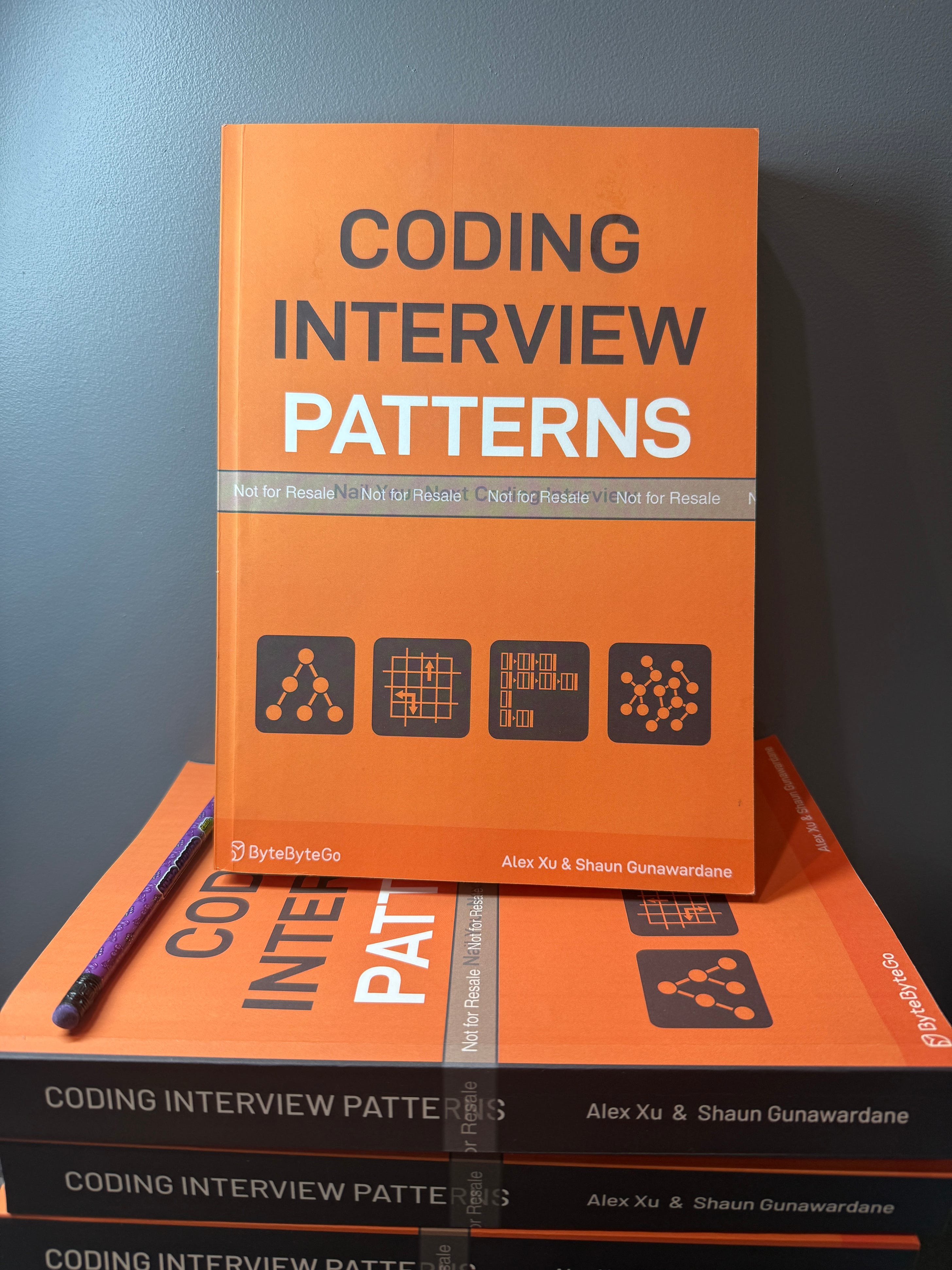
.png?width=1200&upscale=true&name=Composable%20Platform%20-%20email%20banner%20-%201%20day%20to%20go%20(1).png)








